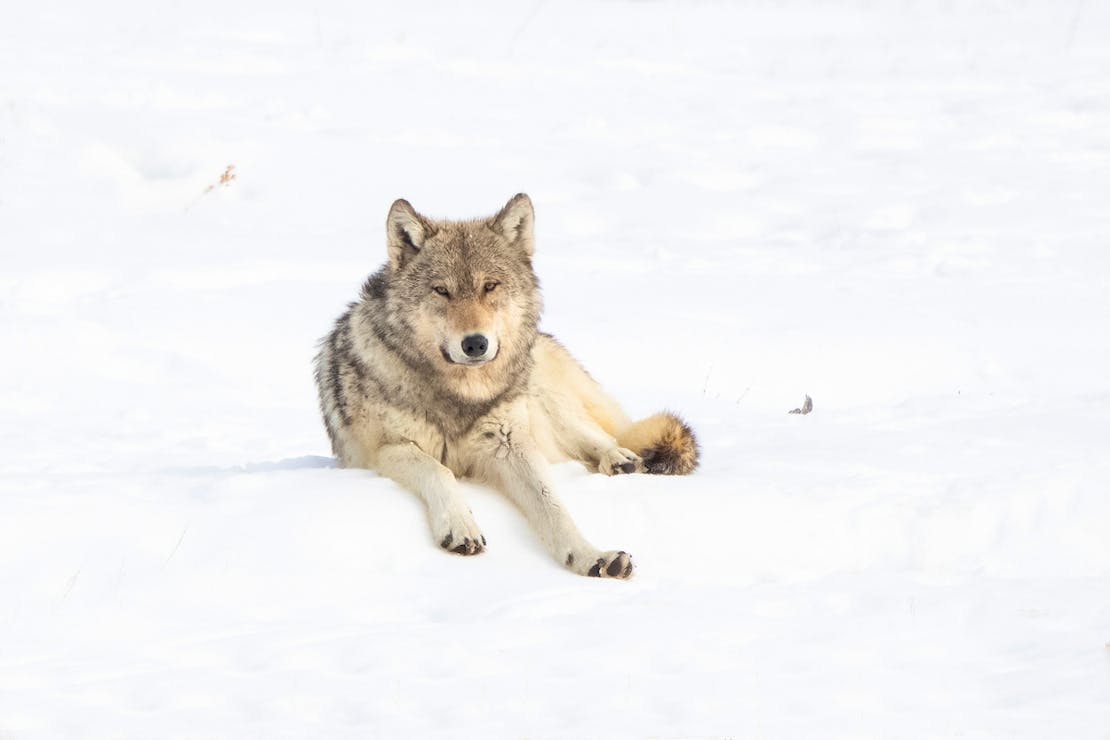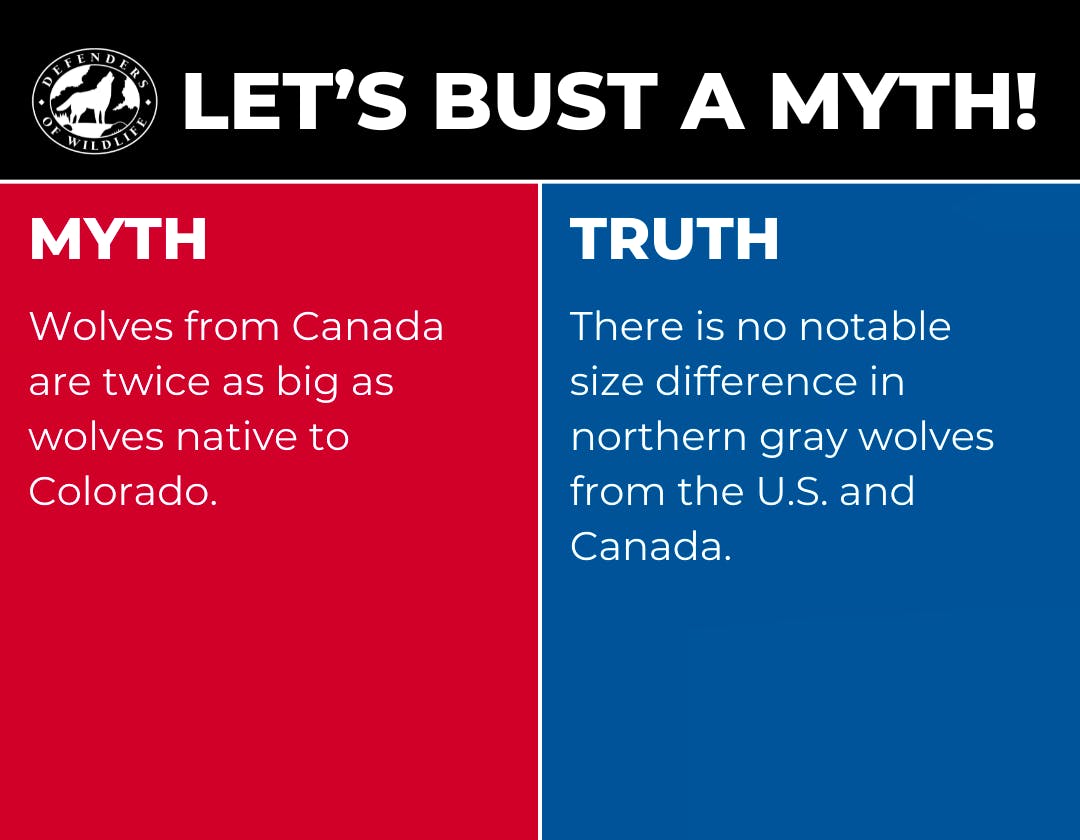Colorado Parks and Wildlife last month announced up to 15 wolves from British Columbia will be reintroduced to Colorado this winter for year two of the state-led wolf releases. Myths of bigger and meaner “Canadian wolves” have traveled far and wide since the announcement surfaced. And this is not the first time these tall tales have spread: wolves from Canada were reintroduced to Yellowstone National Park in the mid-1990s.
It’s time to separate fact from fiction and track down three common misconceptions about Canadian wolves that are howlingly inaccurate.
1. Fact: Wolves from Colorado to Canada all belong to the same species.
The Rocky Mountains were once a continuous range for wolves to travel from Canada down to Mexico. The few gray wolves present in Colorado are the same species (Canis lupus) that once roamed across much of the American West before they were eradicated by humans. They are also the same species present today in the northern Rockies, which stretches from British Columbia, Canada, to southcentral Idaho.
Gray wolves are far-ranging and incredibly adaptable, which allows them to thrive in such a wide variety of habitats.
2. Fact: Wolves in Canada are similar in size to northern gray wolves in the Lower 48
Even though it’s not uncommon for individuals of the same species, particularly mammals and birds, to be larger in colder climates and smaller in warmer ones, there is little variation in wolf size across the northern border. Adult male wolves in British Columbia are reported to weigh 66-110 pounds, compared to those in Colorado estimated to weigh 90-110 pounds. Adult female wolves are typically 20% smaller than adult males.
3. Fact: There is plenty of wild prey available for wolves in Colorado.
Colorado does not have caribou like British Columbia but does share many other kinds of prey for wolves such as elk, deer, moose, beavers and other small mammals. Colorado is also home to the largest elk population in the country at around 280,000 animals, which is expected to be the primary prey for wolves.
Elk herds will naturally increase and decrease in size over time. They do so in response to changes in habitat, nutrition, disease, hunting pressure, predation and weather, among other factors. Sometimes predators may cause local impacts on local prey populations, but predator numbers are primarily driven by the availability of their prey, which in turn is controlled by the availability of food and the uncertainty of the weather.
These factors demonstrate nature’s complex, intertwined relationships, and ensure that elk, deer and other ungulates are not ‘wiped out’ by the animals that eat them. Elk populations in the northern Rockies have thrived since the reintroduction of wolves there.
Overall, wolves from Canada could greatly increase the diversity, reproductivity and resilience of Colorado’s fledging population. Similar to last year’s successful capture and release effort, the wolves will first receive a health check, be tested and treated for potential disease and receive a new GPS collar before being transported to Colorado.
CPW’s goal is to reintroduce a total of 30-50 wolves by 2027, releasing 10-15 each winter. Planning for the arrival of more wolves in Colorado is just one way we are celebrating Wolf Awareness Week, happening now through October 26. You can make an impact for wolves in Colorado by sharing these busted myths with your friends and family today! Follow along with Defenders for more information and updates on the Colorado wolf reintroduction effort.










